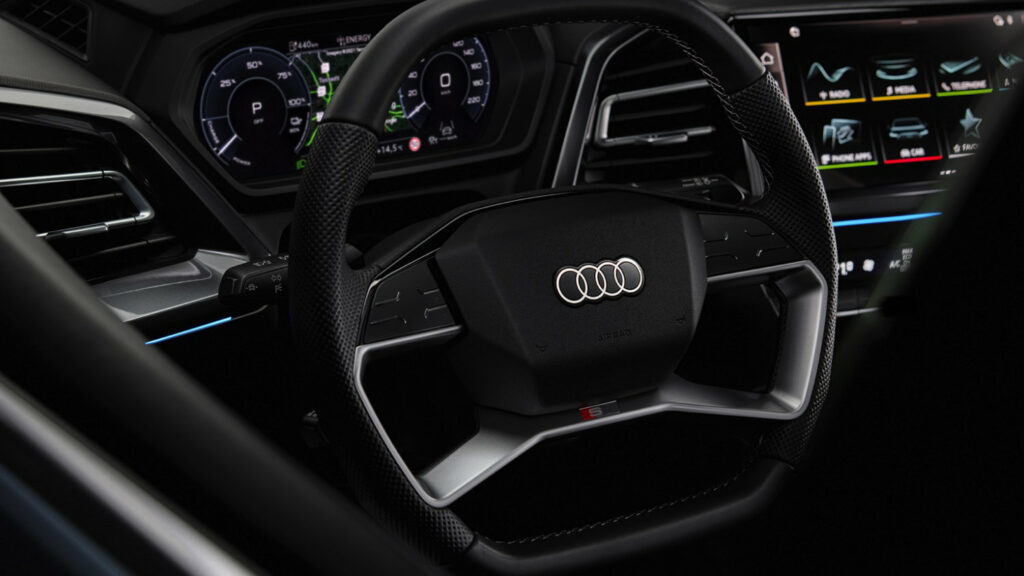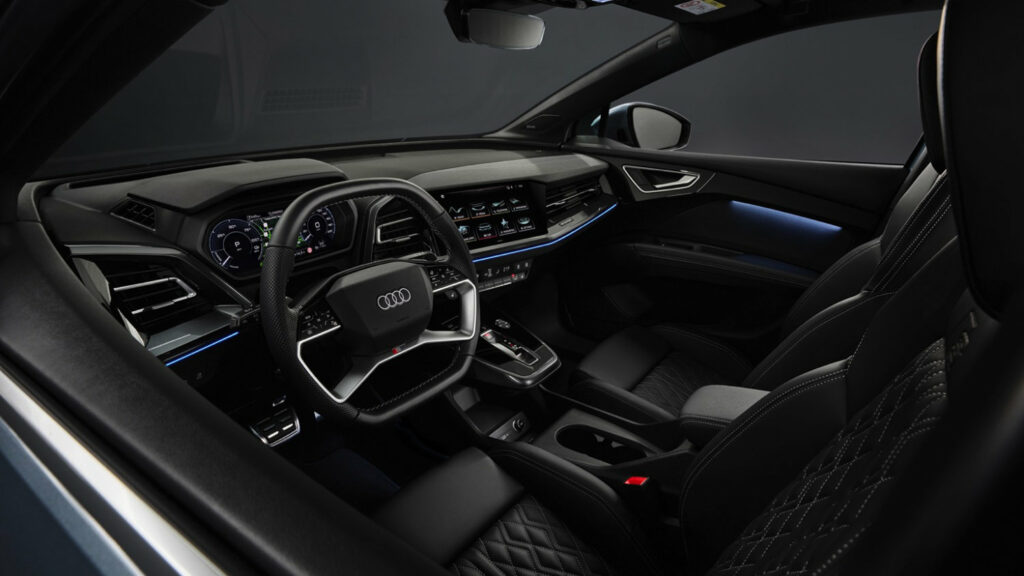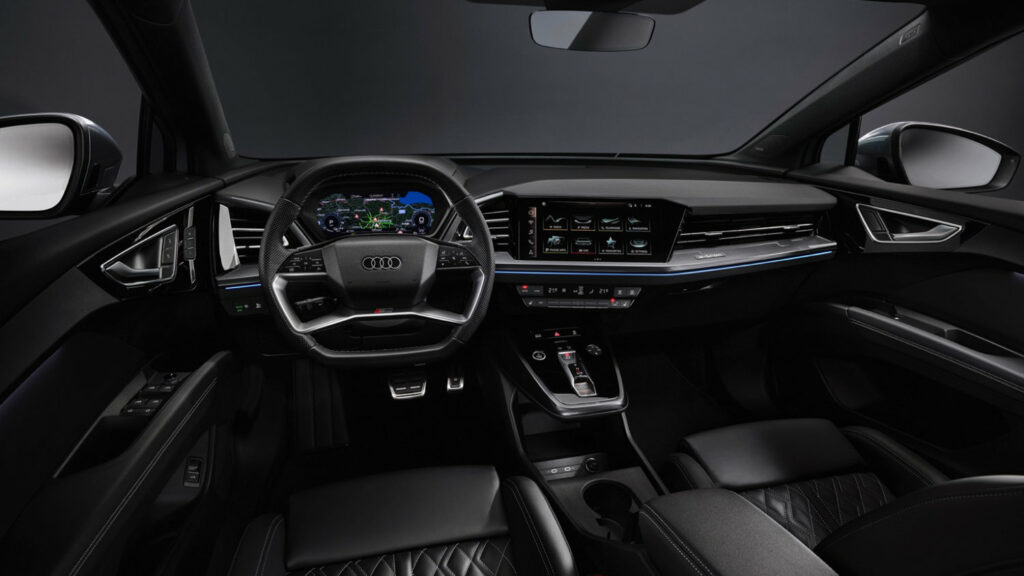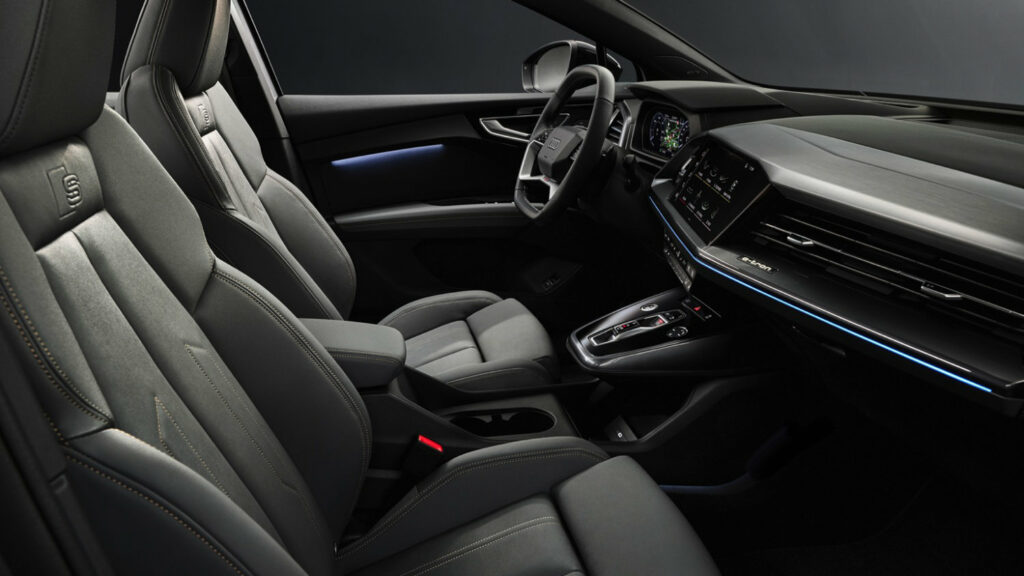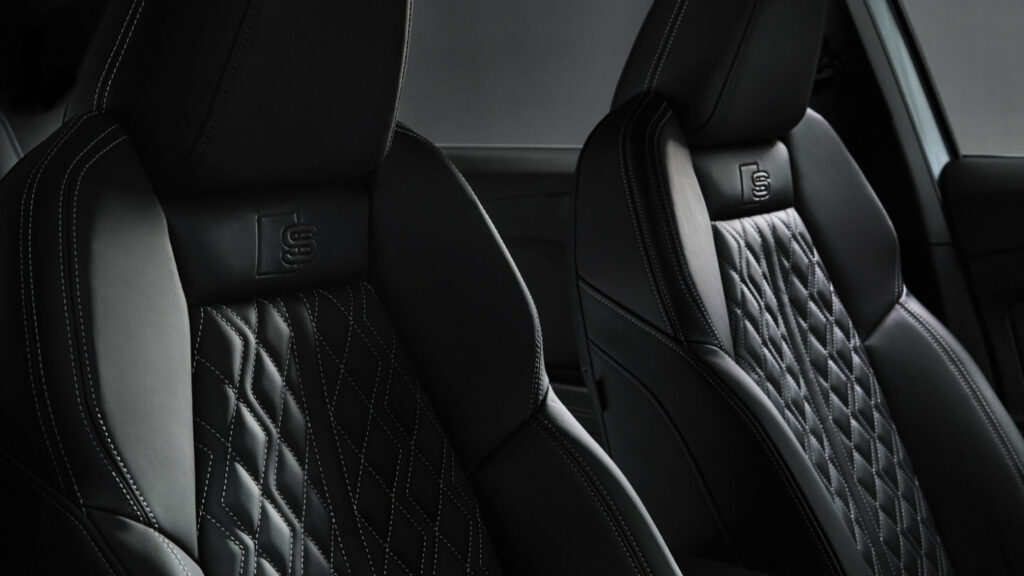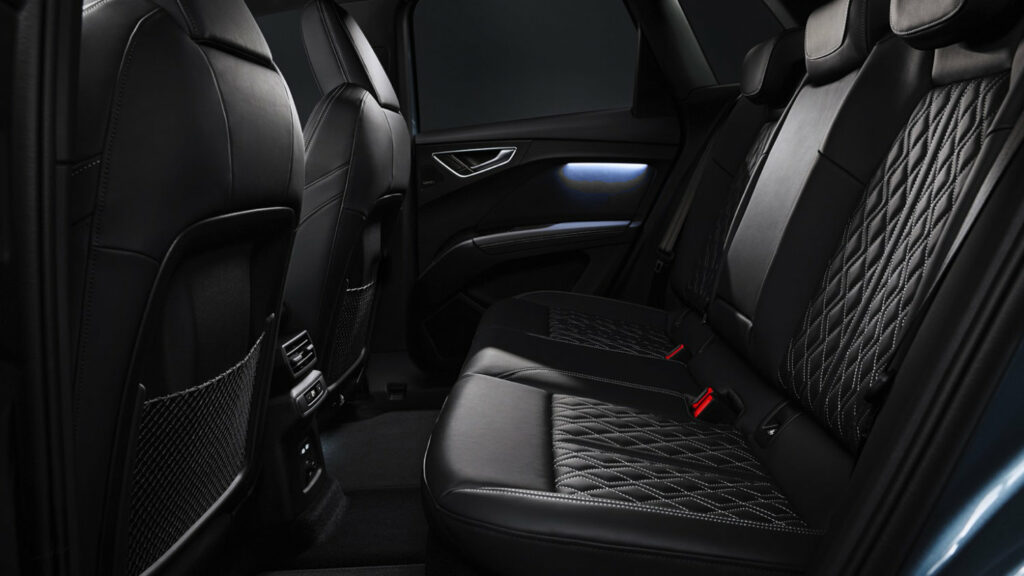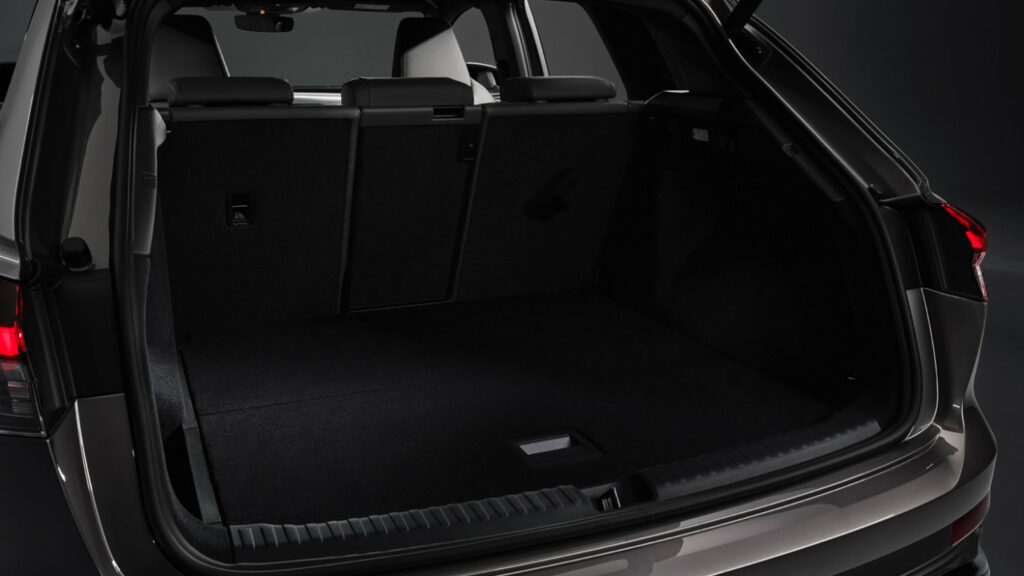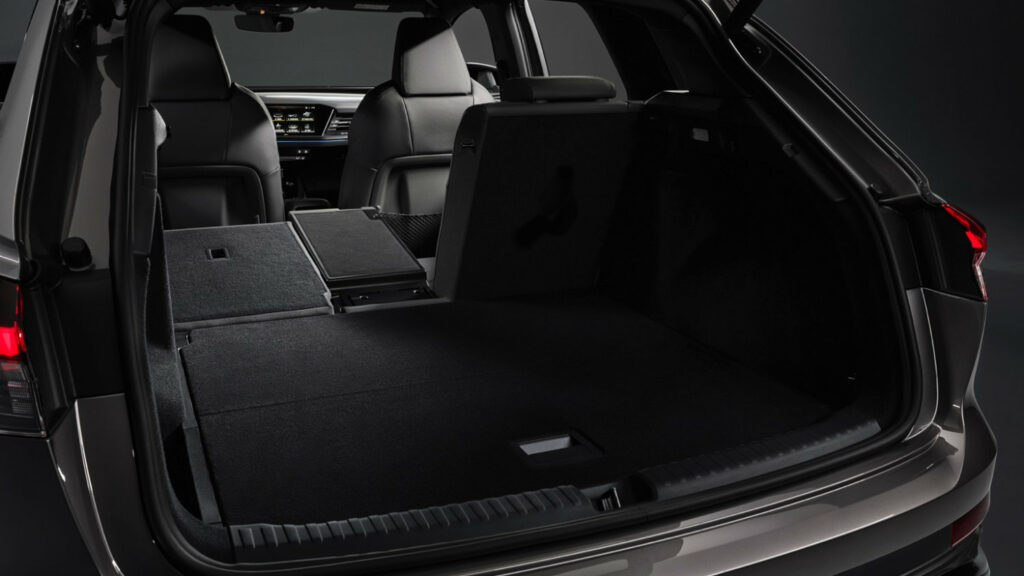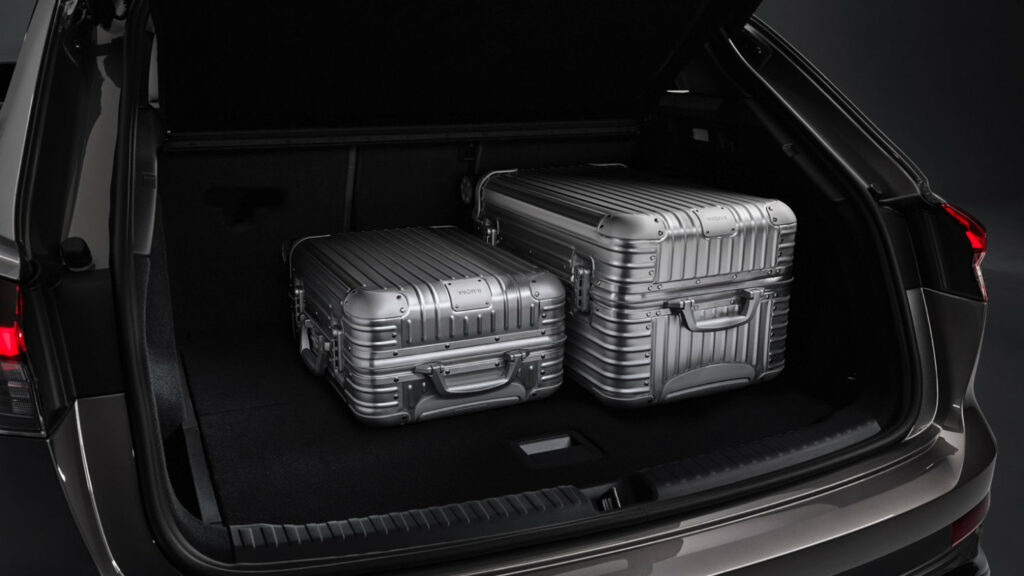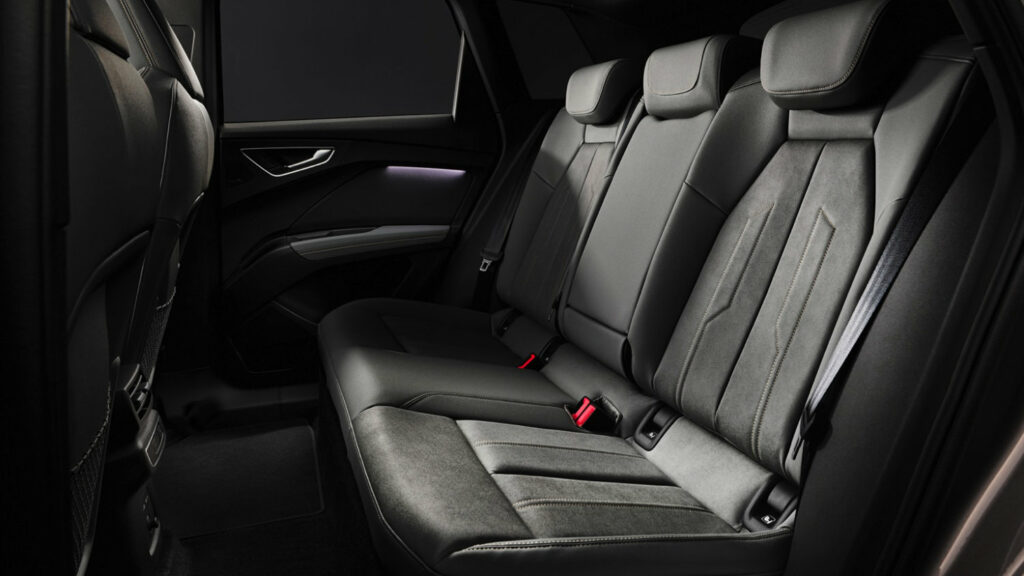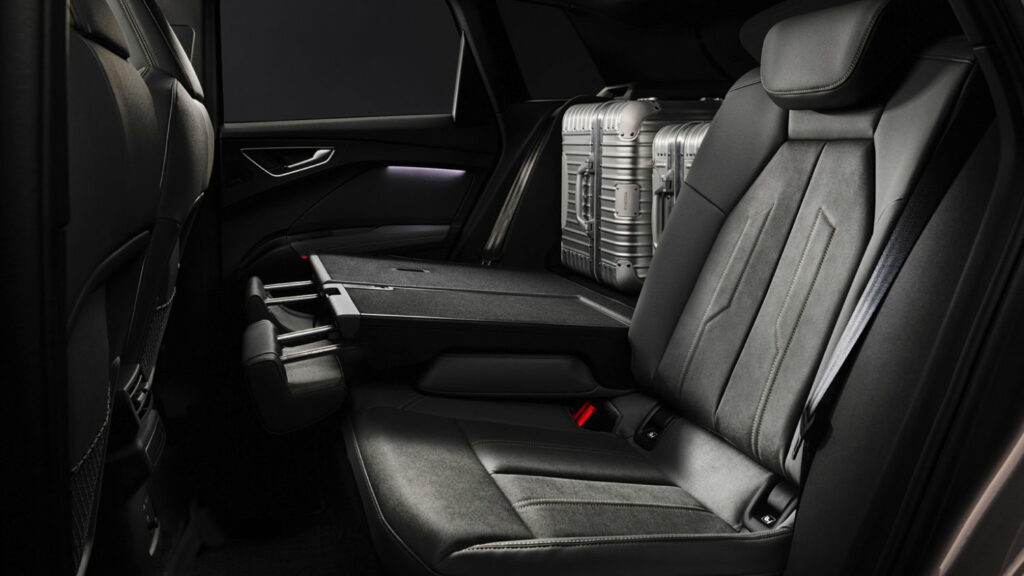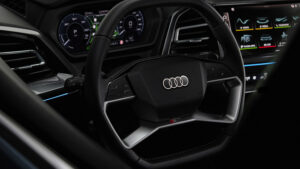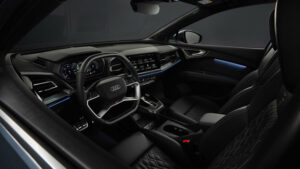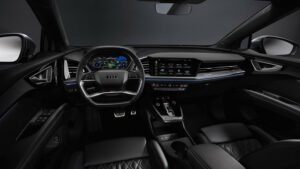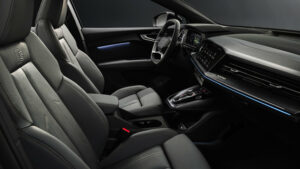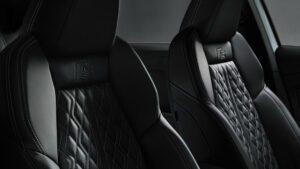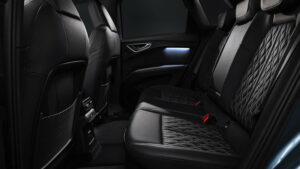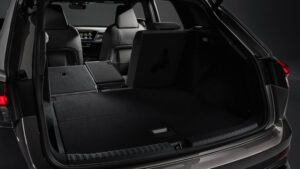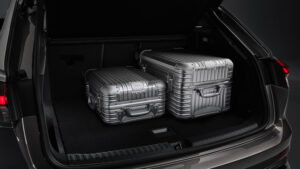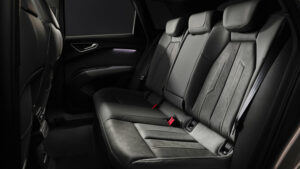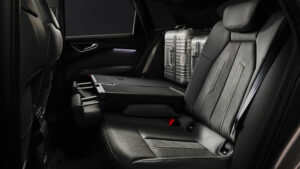Audi Q4 Sportback e-tron 40
The Audi Q4 Sportback e-tron 40 is an electric SUV coupe that was first introduced in 2021. It is based on Volkswagen Group’s MEB platform, which is specifically designed for electric vehicles.

The Q4 Sportback e-tron 40 is equipped with an 82 kWh battery pack that provides a range of up to 460 km on a single charge, according to the WLTP cycle. Its total power is 150 kW (approximately 201 horsepower), 310 Nm, and acceleration from 0 to 100 km/h (approximately 0 to 62 mph) takes 8.5 seconds.
The car has an elegant and sporty design, the sloping roofline gives it a coupe look. It has a spacious cabin that seats up to five passengers and is equipped with a number of high-tech features, including a digital dashboard and a large touchscreen infotainment system.

Other notable features of the Q4 Sportback e-tron 40 include all-wheel drive, adaptive suspension, and a number of advanced safety and driver assistance systems. It is also compatible with fast charging stations that can provide a charge of up to 80 percent in just 38 minutes.
| Performance | |
| Acceleration 0 – 100 km/h | 8.5 sec |
| Top Speed | 160 km/h |
| Electric Range | 425 km |
| Total Power | 150 kW (204 PS) |
| Total Torque | 310 Nm |
| Drive | Rear |
| Battery and Charging | |
| Battery Capacity | 82.0 kWh |
| Battery Useable | 76.6 kWh |
| Europe | |
| Charge Port | Type 2 |
| Port Location | Right Side – Rear |
| Charge Power | 11 kW AC |
| Charge Time (0->425 km) | 8h15m |
| Charge Speed | 52 km/h |
| Fastcharge Port | CCS |
| FC Port Location | Right Side – Rear |
| Fastcharge Power (max) | 126 kW DC |
| Fastcharge Time (43->340 km) | 34 min |
| Fastcharge Speed | 520 km/h |
| Energy Consumption EVDB Real Range | |
| Range | 425 km |
| Vehicle Consumption | 180 Wh/km |
| CO2 Emissions | 0 g/km |
| Vehicle Fuel Equivalent | 2.0 l/100km |
| WLTP Ratings (TEL) | |
| Range | 534 km |
| Rated Consumption | 168 Wh/km |
| Vehicle Consumption | 143 Wh/km |
| CO2 Emissions | 0 g/km |
| Rated Fuel Equivalent | 1.9 l/100km |
| Vehicle Fuel Equivalent | 1.6 l/100km |
| WLTP Ratings (TEH) | |
| Range | 460 km |
| Rated Consumption | 196 Wh/km |
| Vehicle Consumption | 167 Wh/km |
| CO2 Emissions | 0 g/km |
| Rated Fuel Equivalent | 2.2 l/100km |
| Vehicle Fuel Equivalent | 1.9 l/100km |
| TEL = Test Energy Low | TEH = Test Energy High | |
| Rated = official figures as published by manufacturer. Rated consumption and fuel equivalency figures include charging losses. | |
| Vehicle = calculated battery energy consumption used by the vehicle for propulsion and on-board systems. | |
| Real Energy Consumption Estimation | |
| between 125 – 251 Wh/km | |
| City – Cold Weather * | 185 Wh/km |
| Highway – Cold Weather * | 251 Wh/km |
| Combined – Cold Weather * | 213 Wh/km |
| City – Mild Weather * | 125 Wh/km |
| Highway – Mild Weather * | 196 Wh/km |
| Combined – Mild Weather * | 158 Wh/km |
|
Energy use for each trip will vary considerably depending on the driver and the conditions. Therefore, we have provided a range of estimates which can be useful in developing an understanding of the potential benefits of this technology. |
|
| Dimensions and Weight | |
| Length | 4588 mm |
| Width | 1865 mm |
| Width with mirrors | 2108 mm |
| Height | 1614 mm |
| Wheelbase | 2764 mm |
| Weight Unladen (EU) | 2120 kg |
| Gross Vehicle Weight (GVWR) | 2625 kg |
| Max. Payload | 580 kg |
| Cargo Volume | 535 L |
| Cargo Volume Max | 1460 L |
| Cargo Volume Frunk | 0 L |
| Roof Load | 75 kg |
| Tow Hitch Possible | Yes |
| Towing Weight Unbraked | 750 kg |
| Towing Weight Braked | 1000 kg |
| Vertical Load Max | 75 kg |
| Miscellaneous | |
| Seats | 5 people |
| Isofix | Yes, 3 seats |
| Turning Circle | 10.2 m |
| Platform | VW MEB |
| Car Body | SUV |
| Segment | JC – Medium |
| Roof Rails | Yes |
| EV Dedicated Platform | Yes |
Home and Destination Charging (0 -> 100%)
A public charging station is required to use the highest possible charging rate. The EVSE/charging station’s charging capacity affects how long it takes to fully charge the battery. The table below shows all possible options for fully charging the Audi Q4 Sportback e-tron 40.
In Europe, plugging an electric car into an outlet is often as easy as plugging it into a household outlet, but there are differences from country to country. The table below shows the different ways to charge the Audi Q4 Sportback e-tron 40, but in some countries some chargers may not be available.
Type 2 (Mennekes – IEC 62196)

| Charging Point | Max. Power | Power | Time | Rate |
| Wall Plug (2.3 kW) | 230V / 1x10A | 2.3 kW | 39h15m | 11 km/h |
| 1-phase 16A (3.7 kW) | 230V / 1x16A | 3.7 kW | 24h30m | 17 km/h |
| 1-phase 32A (7.4 kW) | 230V / 1x32A | 7.4 kW | 12h15m | 35 km/h |
| 3-phase 16A (11 kW) | 400V / 3x16A | 11 kW | 8h15m | 52 km/h |
| 3-phase 32A (22 kW) | 400V / 3x16A | 11 kW | 8h15m | 52 km/h |
Fast Charging (10 -> 80%)
If you want to enjoy driving an electric car, one of the most important features to consider is the number of miles per hour the car can travel while charged. This is called the “range” of the car. All electric cars have a certain range, even if they are 100% charged. This is because they do not have an internal combustion engine to lean on if you need to drive a long distance.
Max. Power: The maximum power provided by the charging point
Avg. Power: The average power provided by the charging point during a session of 10% to 80%.
Time: the time it takes to charge from 10% to 80%
Speed: the average charging rate during the session of 10% to 80%
Combined Charging System (CCS Combo 2)
| Charging Point | Max. Power | Avg. Power | Time | Rate |
| CCS (50 kW DC) | 50 kW | 45 kW | 75 min | 230 km/h |
| CCS (100 kW DC) | 100 kW | 80 kW | 42 min | 420 km/h |
| CCS (150 kW DC) | 126 kW | 101 kW | 34 min | 520 km/h |
| Brand | Audi |
| Model | Sportback Sportback e-tron 40 |
| Body Style | SUV |
| Car Engine | electric |
| Motor power | 150 |
| Maximum Torque, Nm | 310 |
| Battery Energy, kWh | 82.0 |
| Power reserve (NEDC/EPA/WLTP), km | - / - / 460 |
| Level Charging (230/400/DC), hours | - / 8,15 / 0,34 |
| Electrical Acceleration, 0-100 km/h (0-62.1 mph) in sec | 8.5 |
| Top Speed, km/h | 160 |













